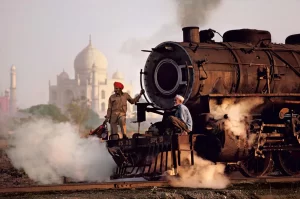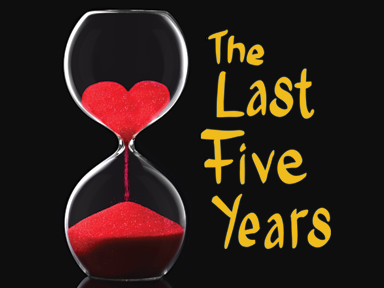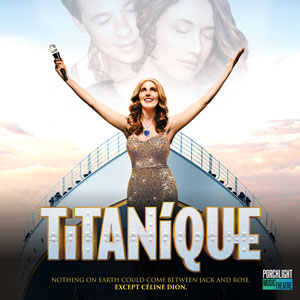
 ***** When internationally renowned photographer Steve McCurry began his photojournalism career at a small newspaper outside of Philadelphia, he had no idea that he would eventually work for National Geographic and find himself on assignment throughout the world. Yet it was when he went off to India to take photos of people and places at age of 19 that he fell in love with the people and their rich cultural heritage. He realized then and there exactly what he wanted to do with his life: to travel widely, immerse himself in non-Western cultures, and document the entire experience.
***** When internationally renowned photographer Steve McCurry began his photojournalism career at a small newspaper outside of Philadelphia, he had no idea that he would eventually work for National Geographic and find himself on assignment throughout the world. Yet it was when he went off to India to take photos of people and places at age of 19 that he fell in love with the people and their rich cultural heritage. He realized then and there exactly what he wanted to do with his life: to travel widely, immerse himself in non-Western cultures, and document the entire experience.
Making its U.S. debut in Chicago is a traveling exhibition currently at the Loyola University Museum of Art (LUMA) that features 110 of McCurry’s most iconic large-format photographs. Representing four decades of his work, the images largely center on those living in developing countries, such as India, Pakistan, Guatemala, New Guinea, Kashmir, Cuba, and the like, including active war zones in Iraq and Afghanistan. McCurry’s focus tends to be on people who live closer to the land than we do in the United States; his photographs provide a glimpse of life that teeters on the boundary between the traditional and the modern. By means of his exceptional photography, he becomes “a witness to the past”, implicitly positing that original cultures have a beauty in and of themselves prior to their contact with Western culture and technology. McCurry also takes careful note of those moments when he has been on the “frontline to history”, such as being in New York City on that fateful day of 9/11.
McCurry’s most unforgettable photo, once on the cover of National Geographic, is that of Sharbat Gula, a young Afghan woman, whose eyes reveal the sadness of living life in a refugee camp. Taken in 1984, this portrait is only one of many that draws out the soulfulness inherent to his spotlighted subjects. In contrast, McCurry’s landscapes run the gamut: When he photographs a runner in the distance in Rio de Janeiro or a man walking in the midst of mountains or even a sole horse in Afghanistan, his depiction of a lone figure evokes a feeling of smallness, isolation, and an acute awareness of being at one with natural surroundings. This is in contrast to his images that depict a hubbub of activity and the colorfulness of city life, such as the hustle-bustle of Calcutta, India. His fascination with trains and his images of train stations ironically give off a different vibe, that is, a much more silent overlook of what it means to live in a technology-laden mechanized world. One of my favorite photographs is entitled “Taj and Train” from 1983 an illusory superimposition of a locomotive and two men over the Taj Mahal in the distance with the implication that the modern is eclipsing the traditional. Then too, there is the image where we see a man carrying his sewing machine by his head when the water from a monsoon flood has nearly submerged both of them. Many photographs depict situations which may seem commonplace to those in foreign countries but appear unusual to contemporary Americans.
It is not only the eye of the photographer that is on exhibit at LUMA but the layout of the exhibition itself. It is beautifully organized by theme rather than according to the year when each photograph was taken. For example, one section is devoted to monks in their saffron robes from countries like Burma/Myanmar and Cambodia, and there are other portraits of holy men from places like Guatemala, New Guinea, and the like. Most notably is the holy man from India painted green that got a whole wall to himself. I also loved the photo of the monks literally bouncing off the walls! What does this say about Spirit and the human spirit and the intertwining of the two?
Now it’s time for visitors to immerse themselves in each of these enduring images. While going through the exhibition takes about an hour, this includes seeing a wonderful, self-narrated documentary film about McCurry’s life, where we learn about the inspiration behind his photography and the art of taking photographs. We discover that it is not just about the journey but the “serendipitous chance encounters” along the way that can make for excellent images. “Let the situation wash over you” is one element of McCurry’s personal philosophy that he relates to his art. “Don’t let something good slip away,” he says. Above all, it is vital to observe how other individuals live their lives and to respect them and their point of view. Also essential is having a trusty Nikon camera and a highly competent driver and guide who can take you to all the right places and help you avoid danger.
“ICONS, a Retrospective with the Most Iconic Images of Photographer Steve McCurry” is being featured at the Loyola University Museum of Art (LUMA), 820 N. Michigan Avenue, on Chicago’s Magnificent Mile. It is open to the public seven days a week.
Timed-entry tickets range from $20.70-$27.
Special prices are available for seniors 65+, students, and groups of six or more.
Entry times:
Sunday, Monday, Tuesday, Wednesday: 11:00 a.m. – 6:00 p.m. (doors close at 7:00 p.m.)
Thursday, Friday, Saturday: 11:00 a.m. – 7:00 p.m. (doors close at 8:00 p.m.)
Although the exhibition is scheduled to run through February 1, 2024, I was told in person that it will be probably be around through May 2024. Tickets, however, are on sale for dates only through this coming Thanksgiving weekend.
For more information or to purchase tickets, visit Steve McCurry. ICONS: Extraordinary Photo Exhibition Chicago Tickets | Fever (feverup.com) or https://feverup.com/m/140002?






More Stories
Our Milwaukee “Staycation” 2025!
Passover
“Chocolate”